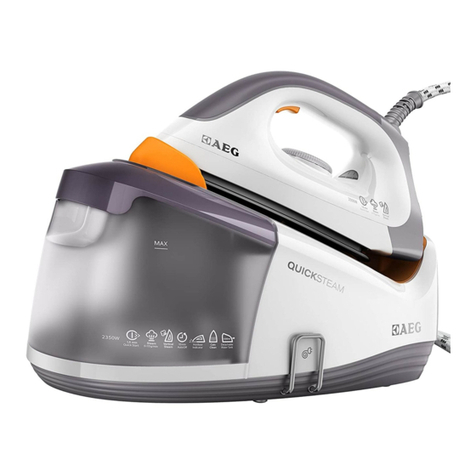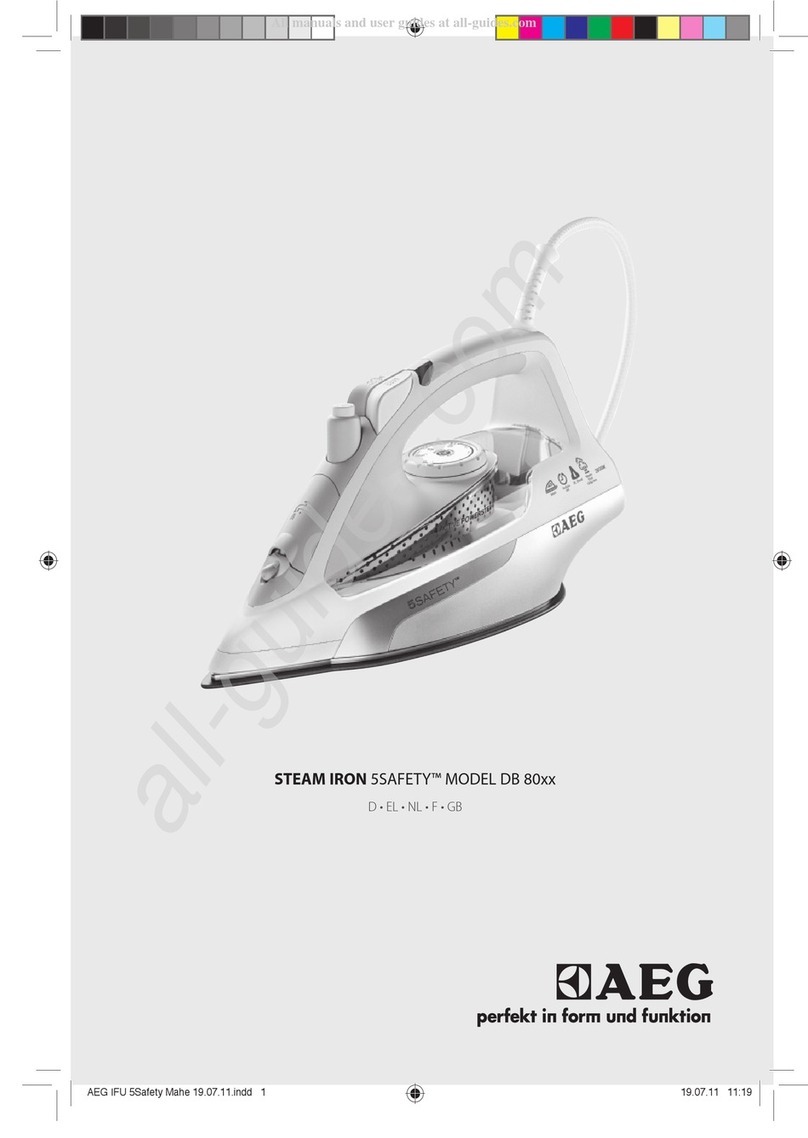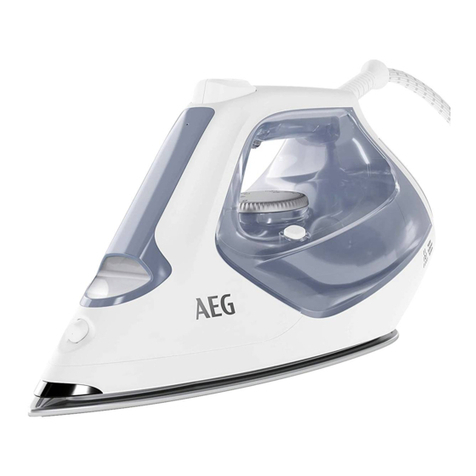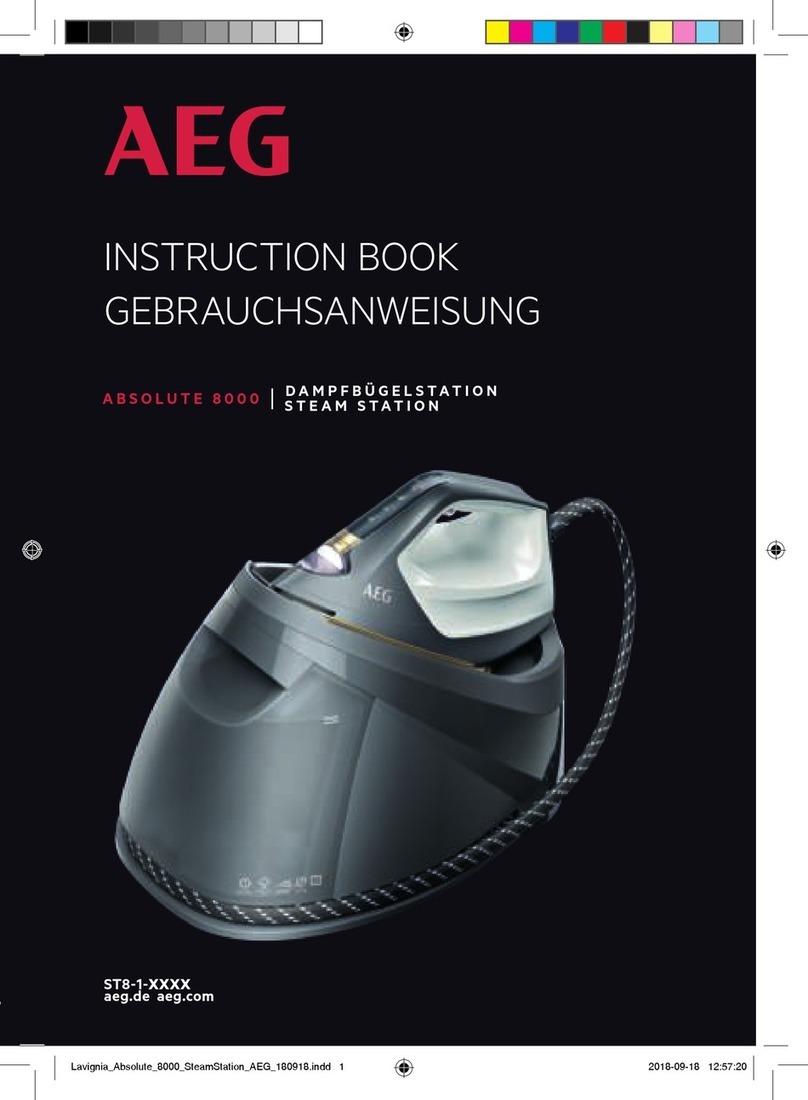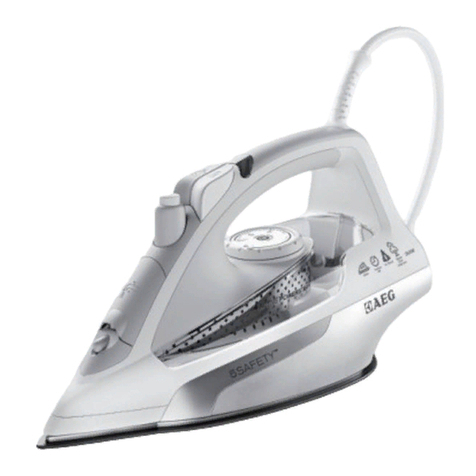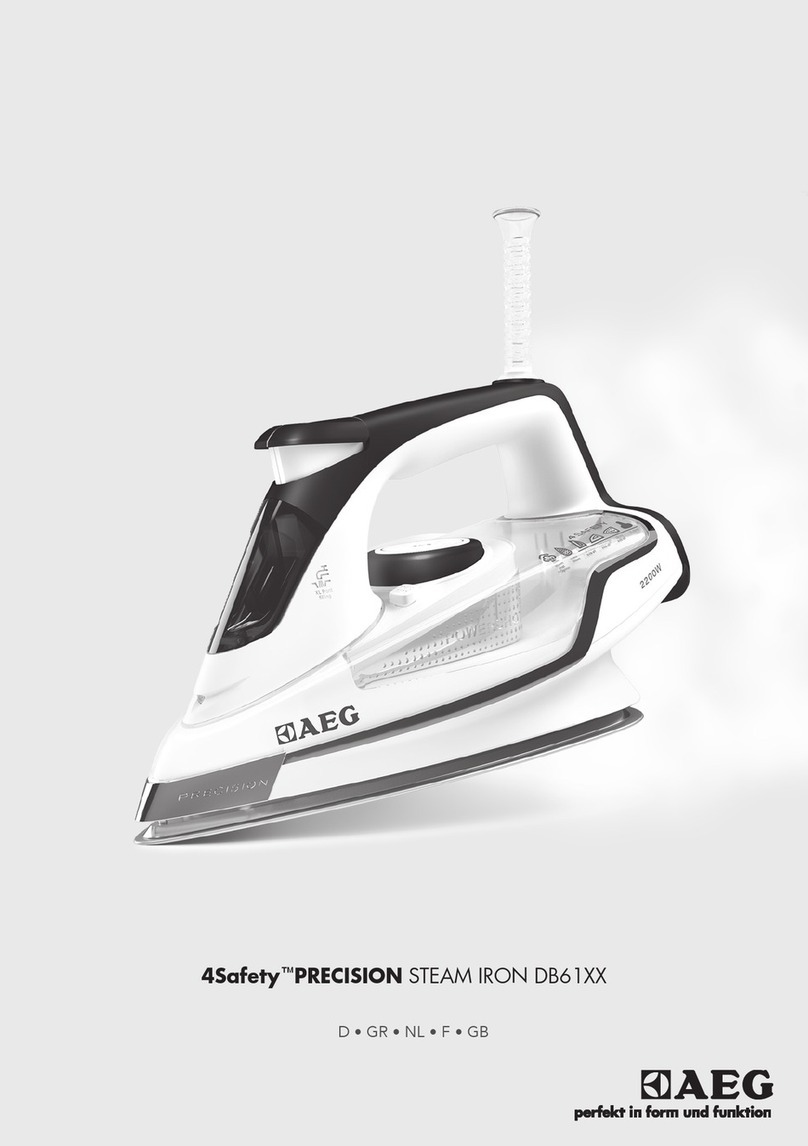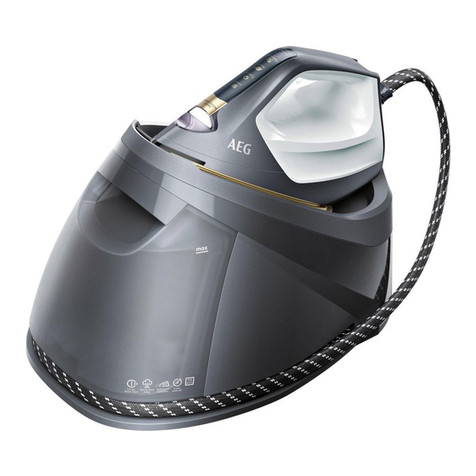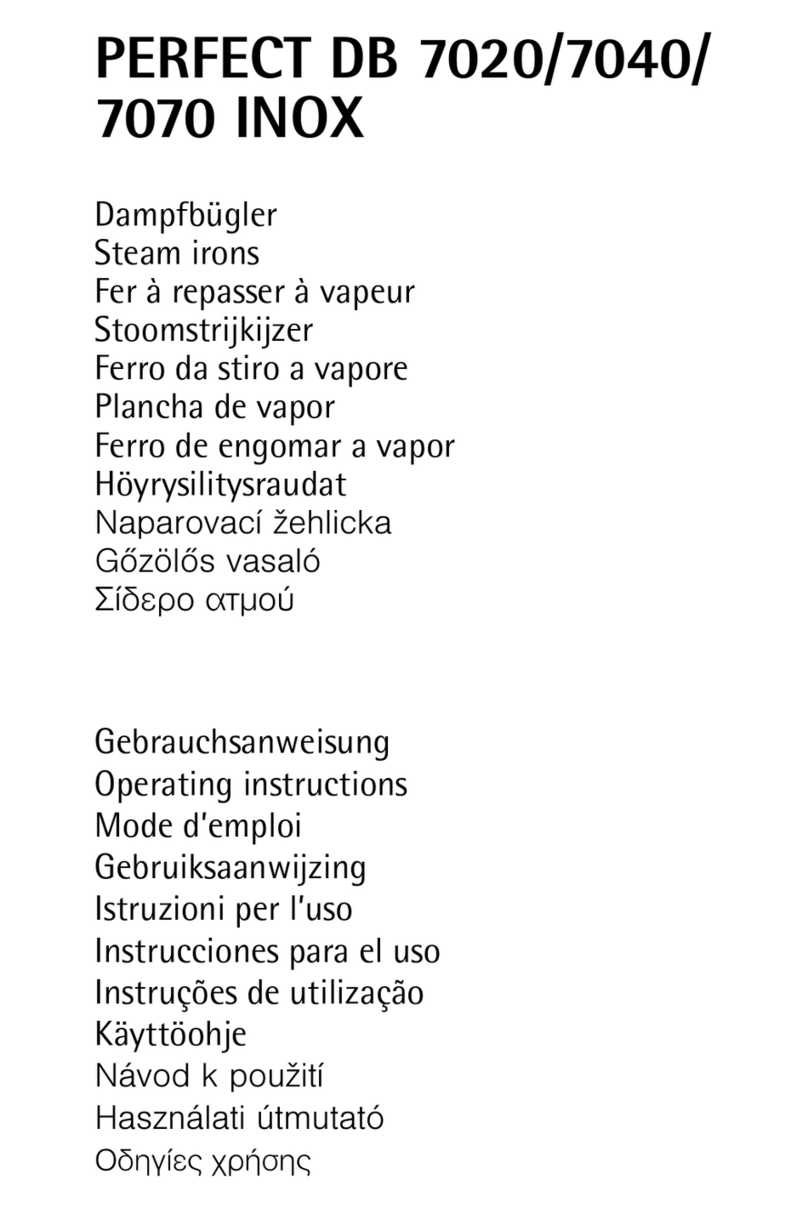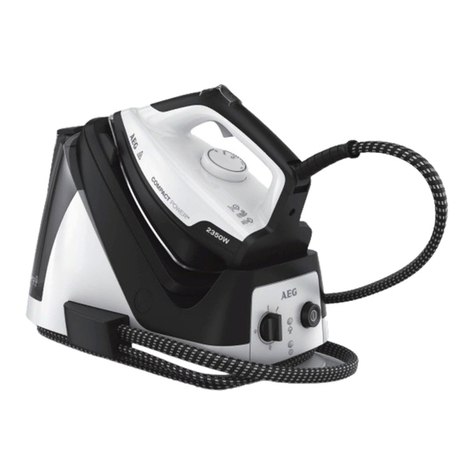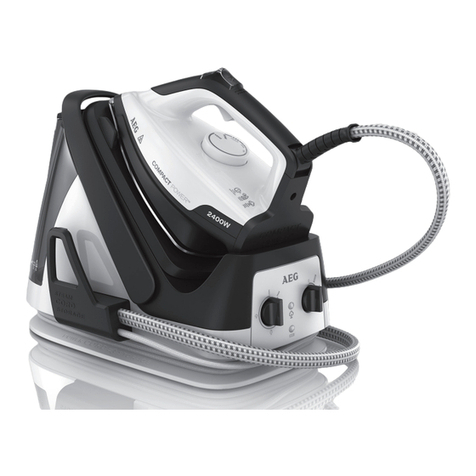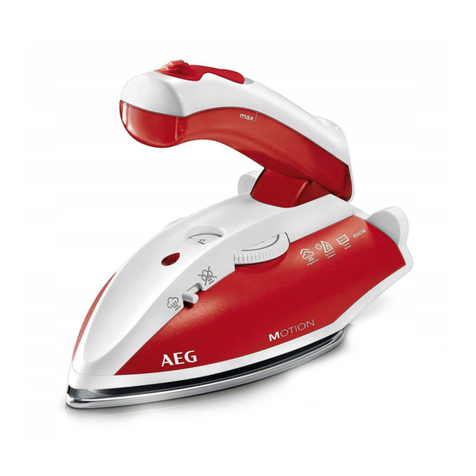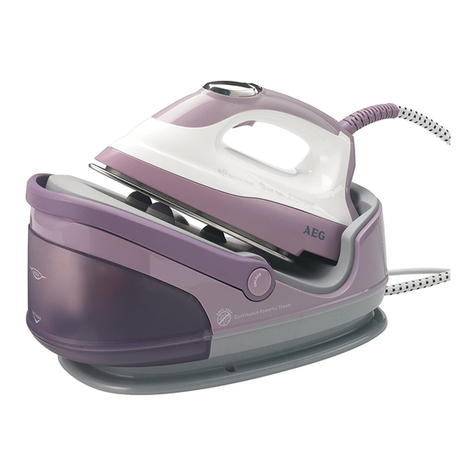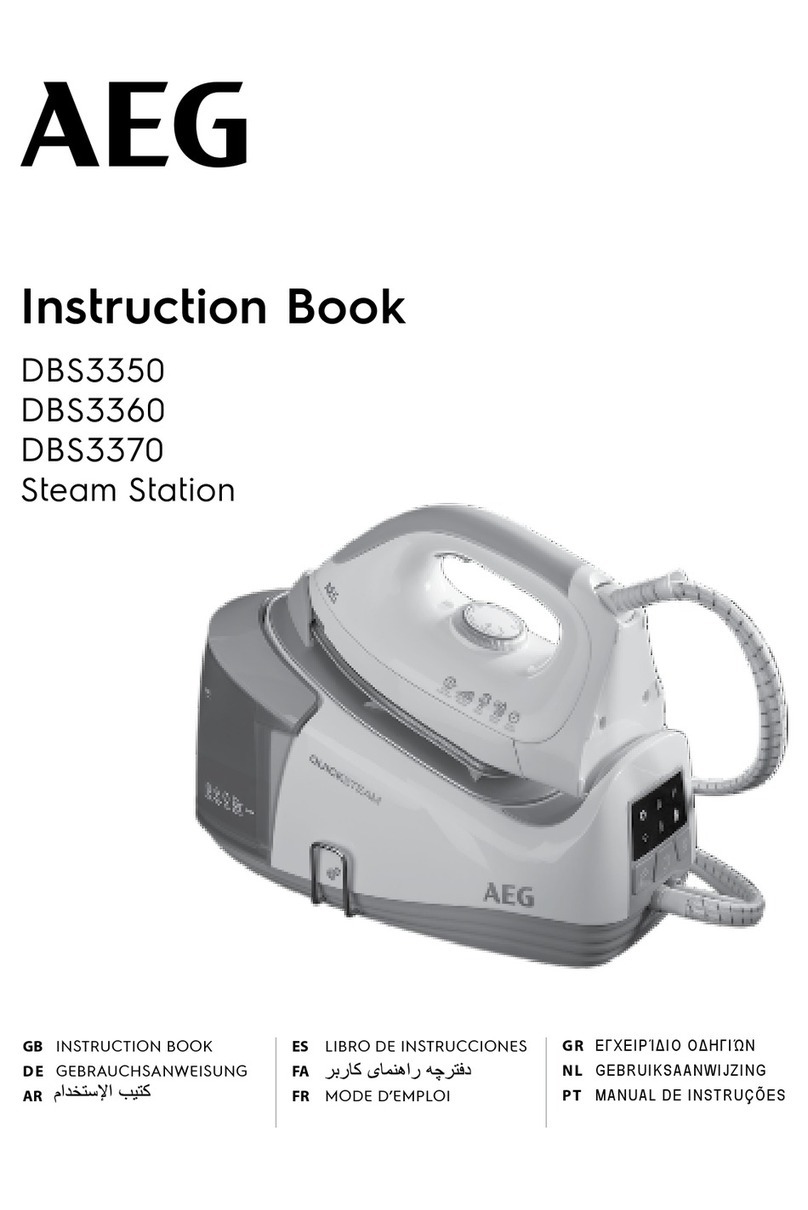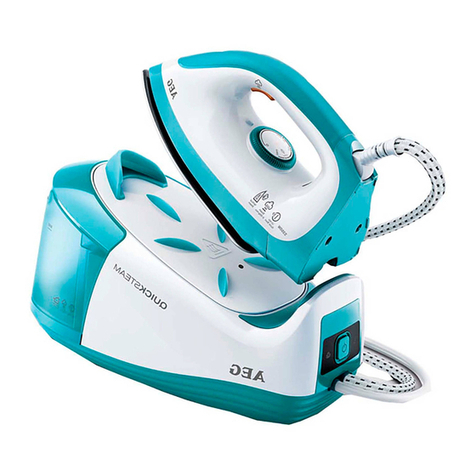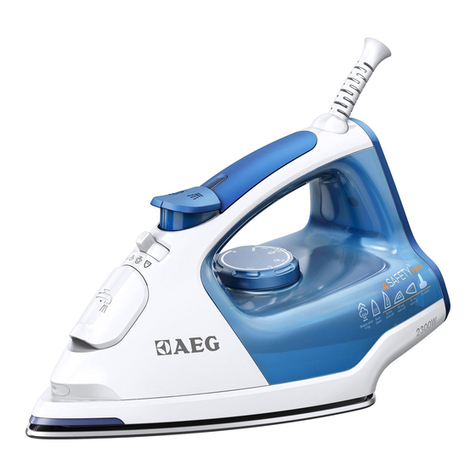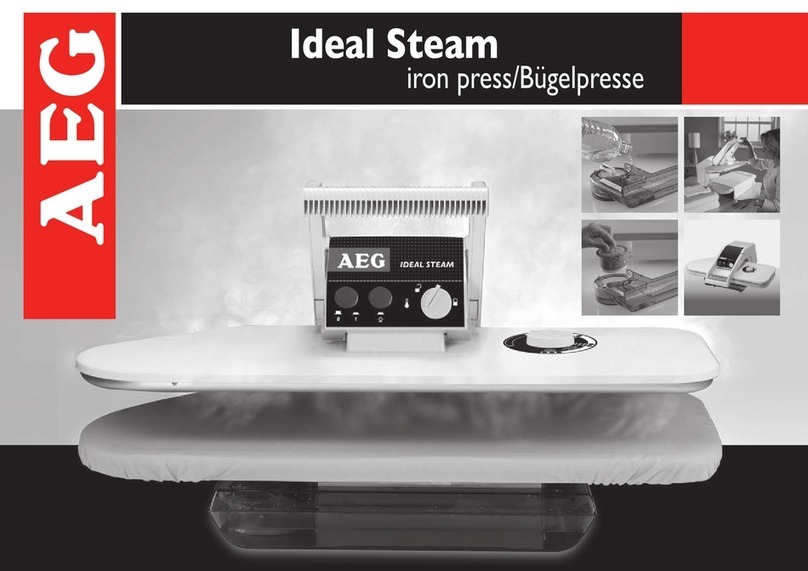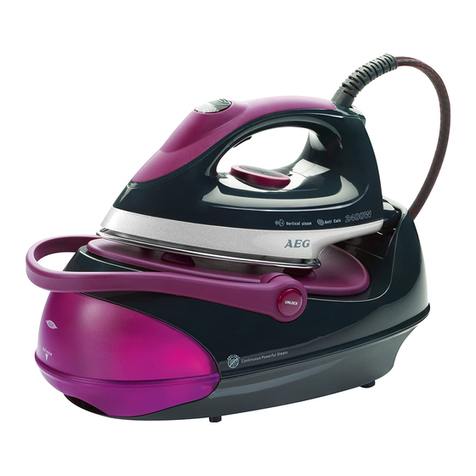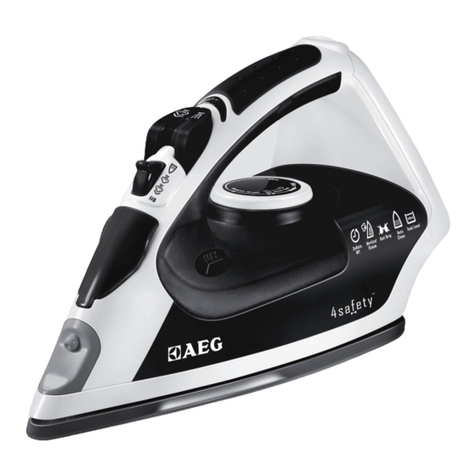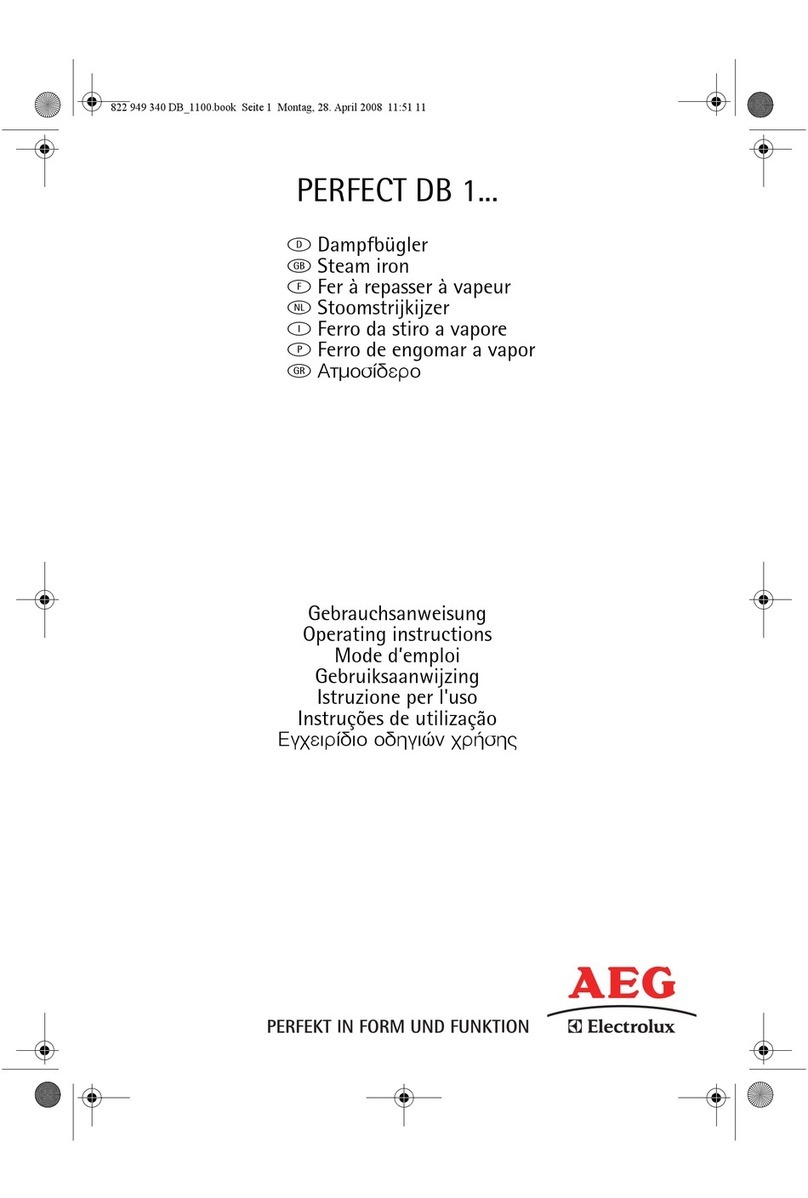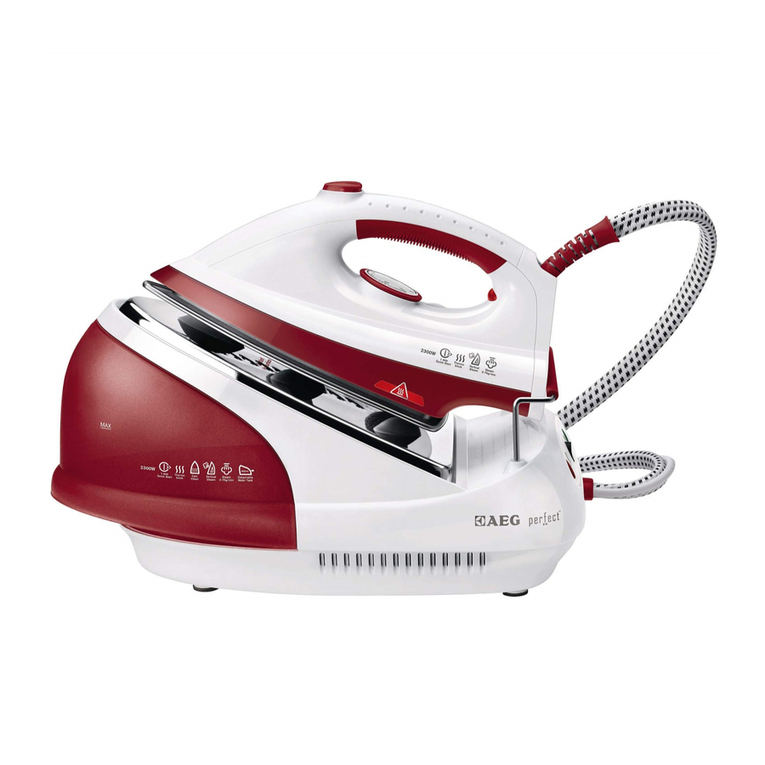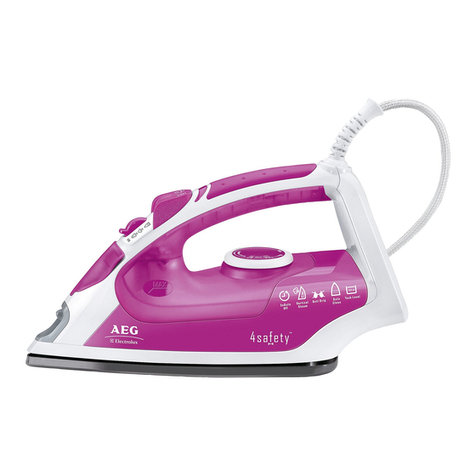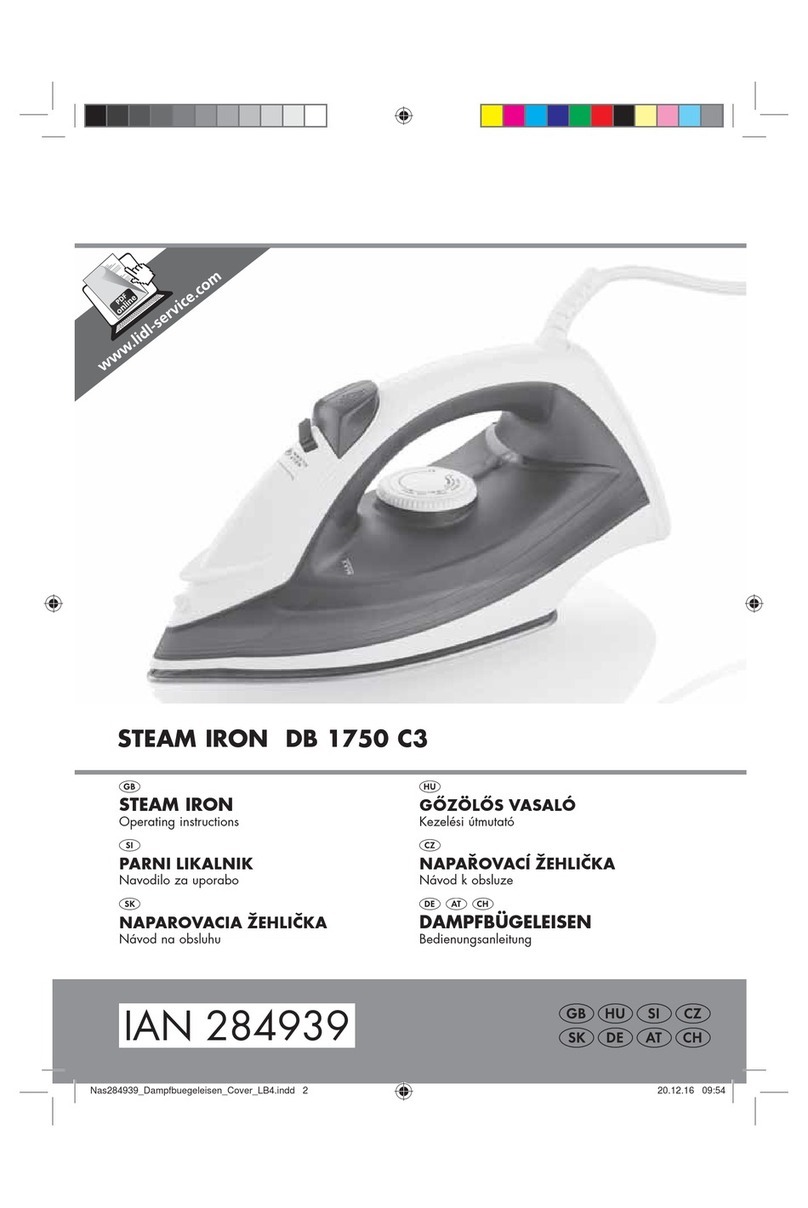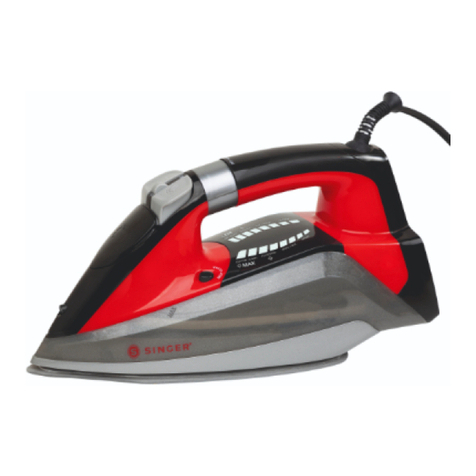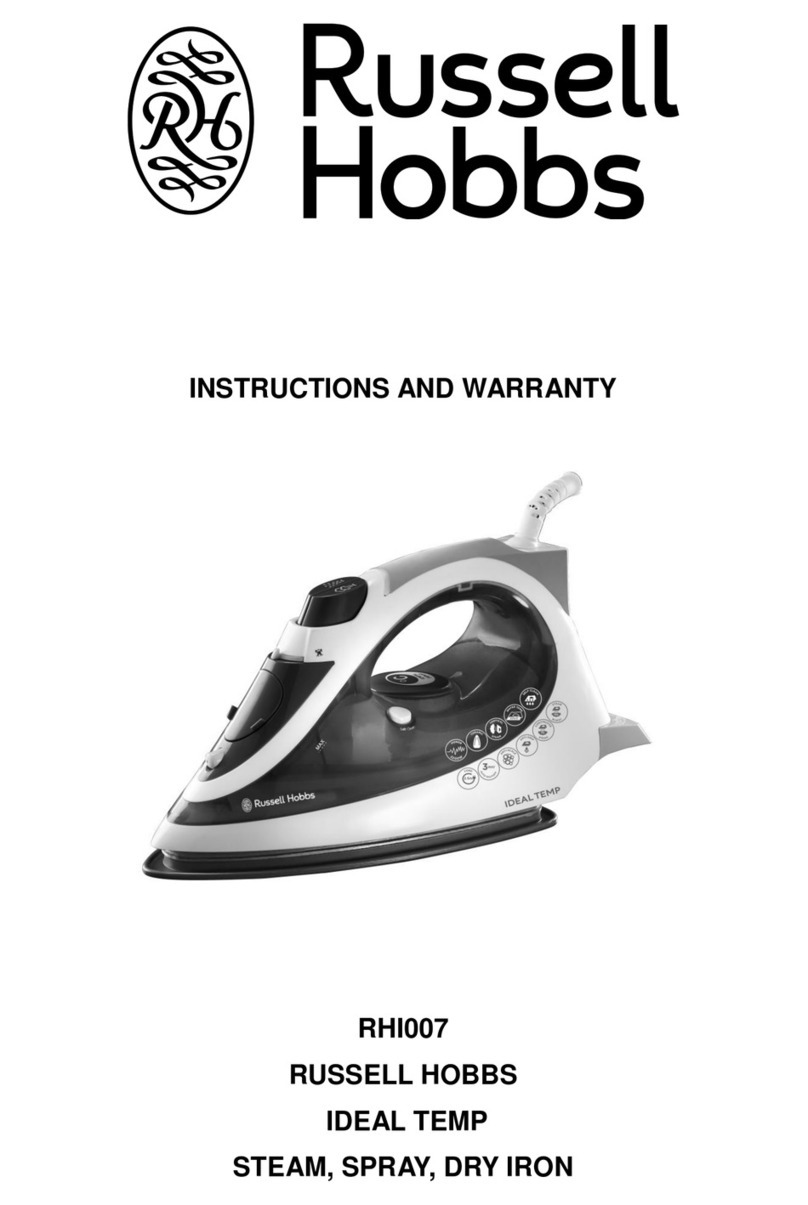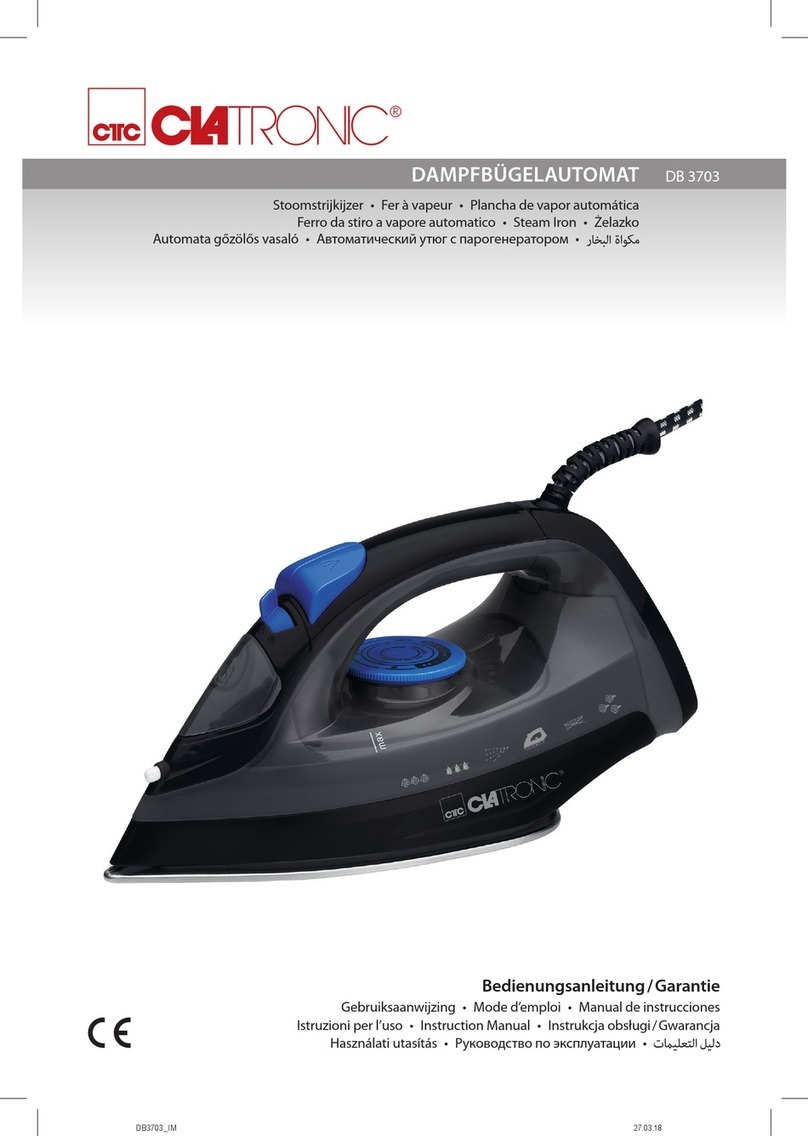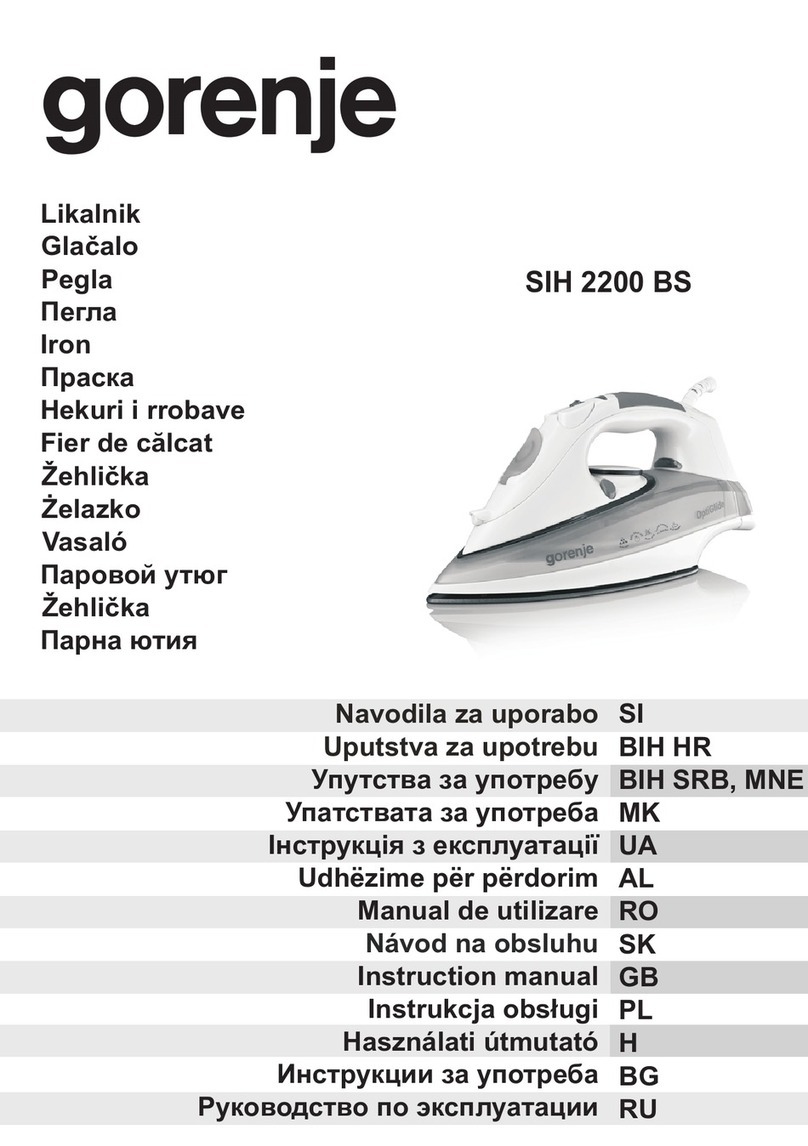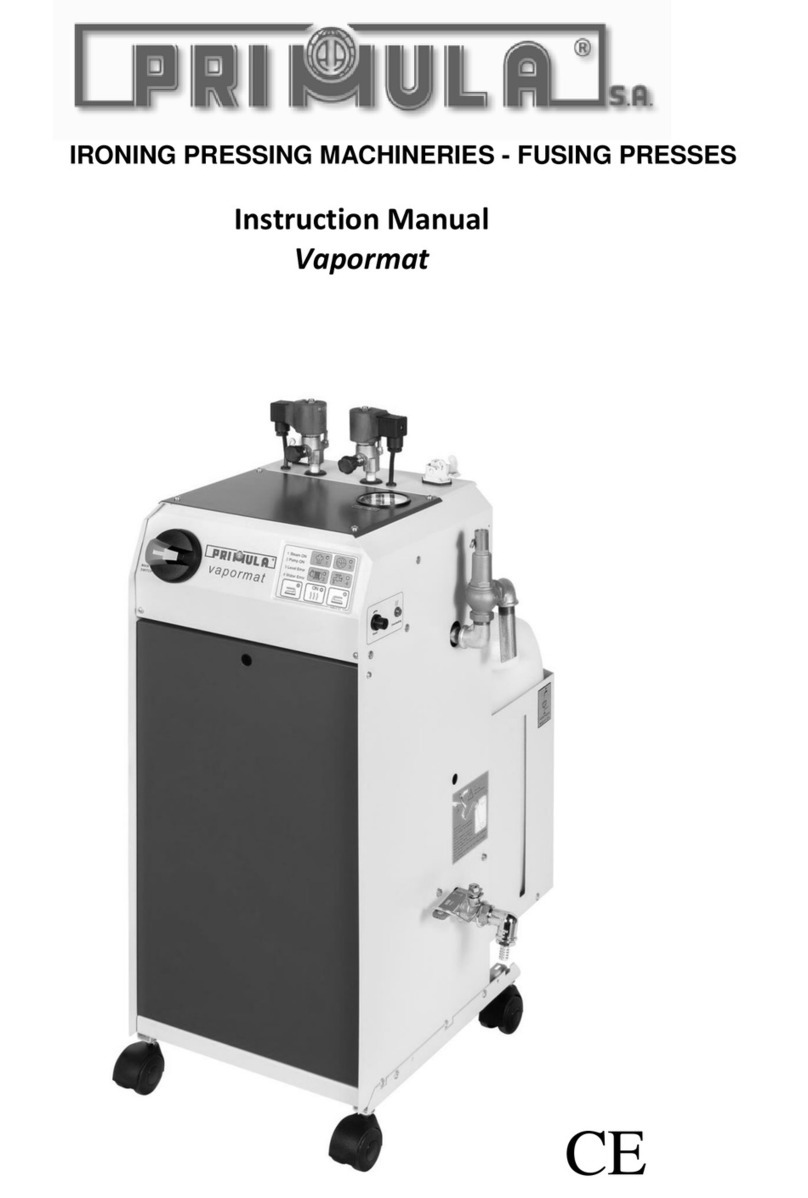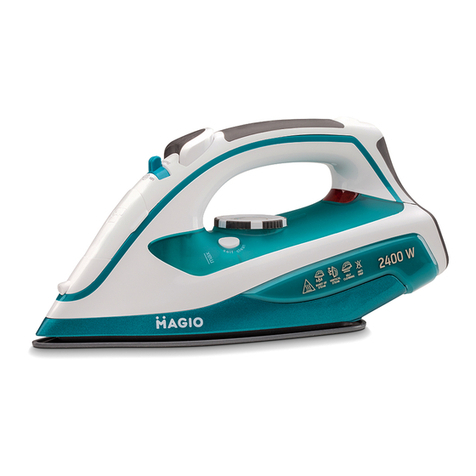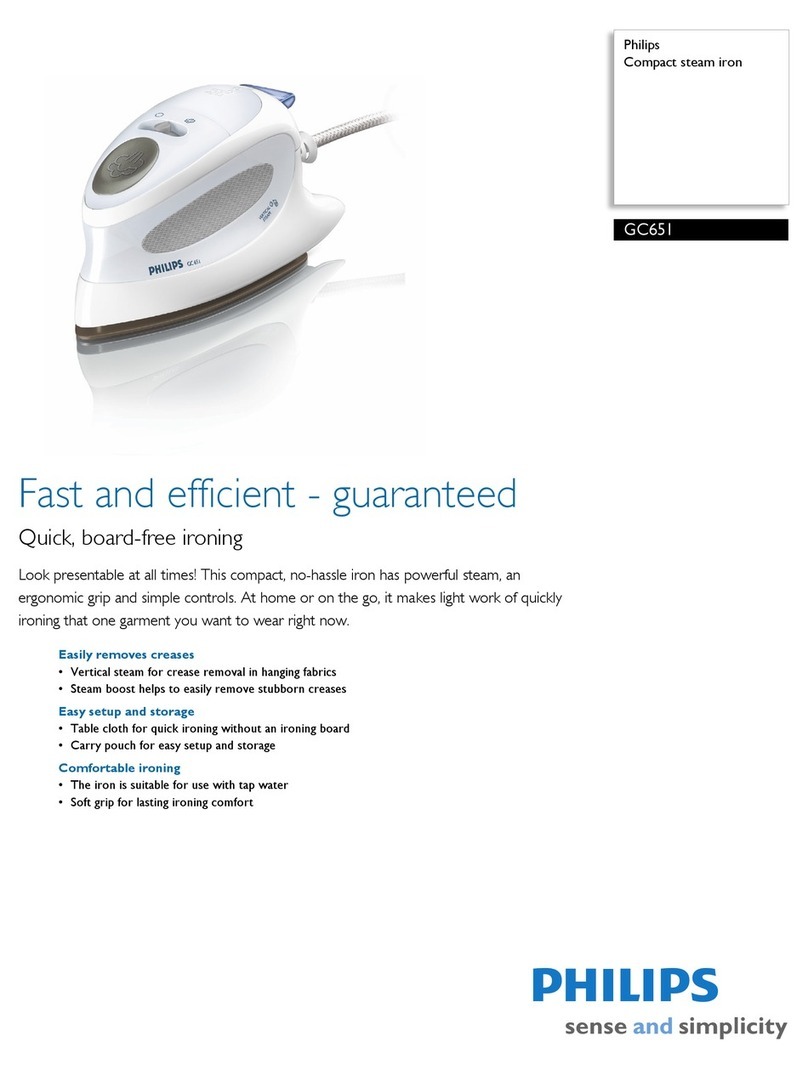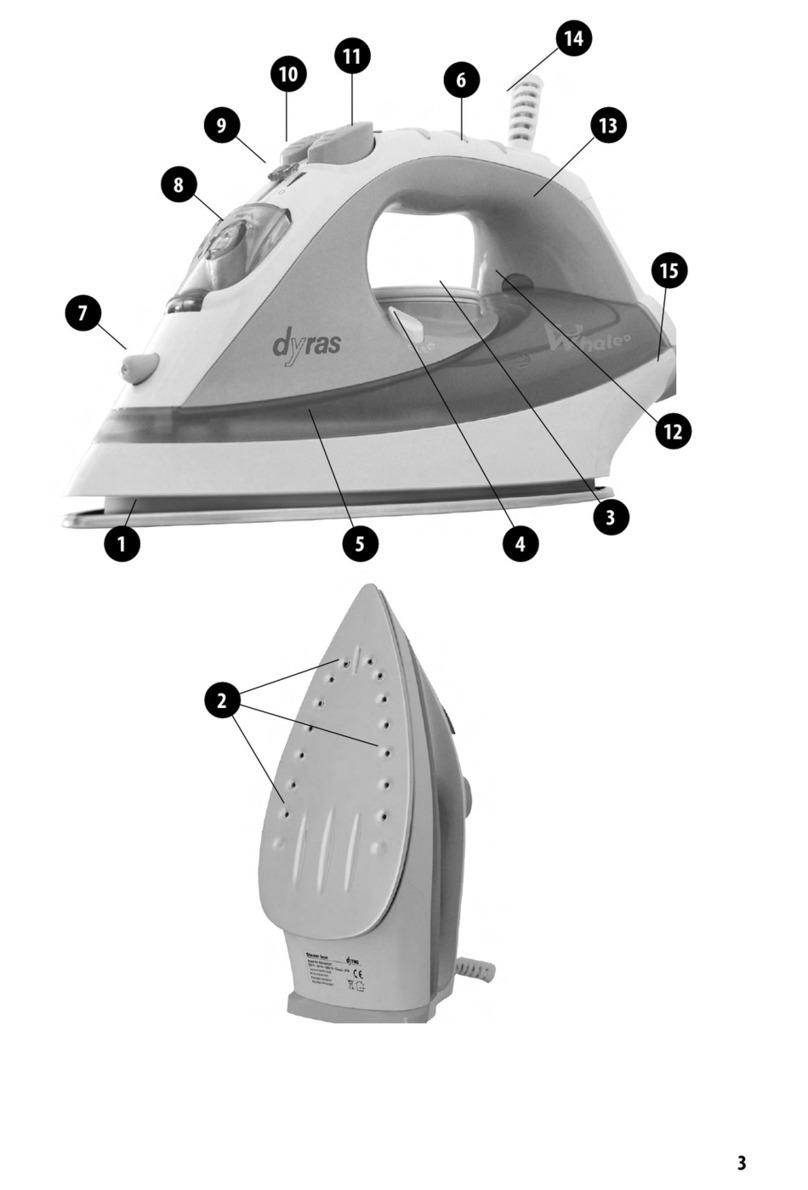
d
10
Was tun, wenn...
• bei Dampfbetriebsstellung kein
„Dampf“ zu sehen ist?
– In warmer, trockener Luft (Winter-
zeit) ist eine geringere Abdampf-
fahne normal, weil sie von der
trockenen Luft unkondensiert aufge-
nommen wird.
– Das Entleeren des gefüllten Wasser-
tanks kann Flusen herausspülen.
Netzstecker ziehen, gefülltes Gerät
schräg nach vorn kippen (Bild 7), so
daß das Wasser aus der Einfüllöff-
nung herauslaufen kann.
• Wassertropfen aus den Dampfaustritts-
öffnungen kommen?
– Dampfwähler erst dann auf Position
„1“ oder mehr stellen, wenn die Tem-
peratur für das Dampfbügeln
erreicht ist. Falls die Temperatur für
den Dampfbetrieb zu niedrig einge-
stellt ist, höher stellen.
• beim Bügeln Flecken auf der Wäsche
entstehen?
– Reinigen Sie den Dampfbügler. Rei-
ben Sie die noch warme Sohle mit
Essigwasser oder einem nicht krat-
zenden Reinigungswasser ab.
– Beim Trockenbügeln können Flusen
in die Dampfkammern gelangen und
verschwelen. Dies kann durch aus-
tretendes Wasser zu Flecken führen.
Reinigen Sie deshalb auch das Innere
des Wasserbehälters. Füllen sie ihn
mit Wasser und schütteln sie den
Dampfbügler leicht. Gießen Sie das
Wasser danach aus.
• die Bügelsohle stumpf oder belegt ist?
– Die Bügeltemperatur war zu hoch
eingestellt.
– Wählen Sie die für die Faser geeig-
nete Bügeltemperatur (siehe Bügel-
tabelle).
Entsorgung
2Verpackungsmaterial
Die Verpackungsmaterialien sind
umweltverträglich und wiederverwert-
bar. Die Kunststoffteile sind gekenn-
zeichnet, z. B. >PE<, >PS< etc. Entsorgen
Sie die Verpackungsmaterialien entspre-
chend ihrer Kennzeichnung bei den
kommunalen Entsorgungsstellen in den
dafür vorgesehenen Sammelbehältern.
2Altgerät
Das Symbol Wauf dem Produkt
oder seiner Verpackung weist darauf
hin, dass dieses Produkt nicht als nor-
maler Haushaltsabfall zu behandeln ist,
sondern an einem Sammelpunkt für
das Recycling von elektrischen und
elektronischen Geräten abgegeben
werden muss. Durch Ihren Beitrag zum
korrekten Entsorgen dieses Produkts
schützen Sie die Umwelt und die Ge-
sundheit Ihrer Mitmenschen. Umwelt
und Gesundheit werden durch falsches
Entsorgen gefährdet. Weitere Informa-
tionen über das Recycling dieses Pro-
dukts erhalten Sie von Ihrem Rathaus,
Ihrer Müllabfuhr oder dem Geschäft, in
dem Sie das Produkt gekauft haben.
Im Service-Fall
Bei einer evtl. erforderlichen Reparatur,
einschließlich Ersatz der Netzzuleitung,
wenden Sie sich bitte zunächst telefo-
nisch an unsere Serviceline AEG-
Electrolux.
Für Deutschland: 01805-30 60 80*:
*aus dem Festnetz der Deutschen Telekom Euro 0,12/Min.
Für Österreich:
Für Reparaturservice: 0810-955 400 *
Für Produktservice: 0810-955 200*
*aus dem Festnetz der TELEKOM AUSTRIA Euro 0,10/Min
822 949 208 DB_4050.book Seite 10 Dienstag, 14. Februar 2006 6:46 18
